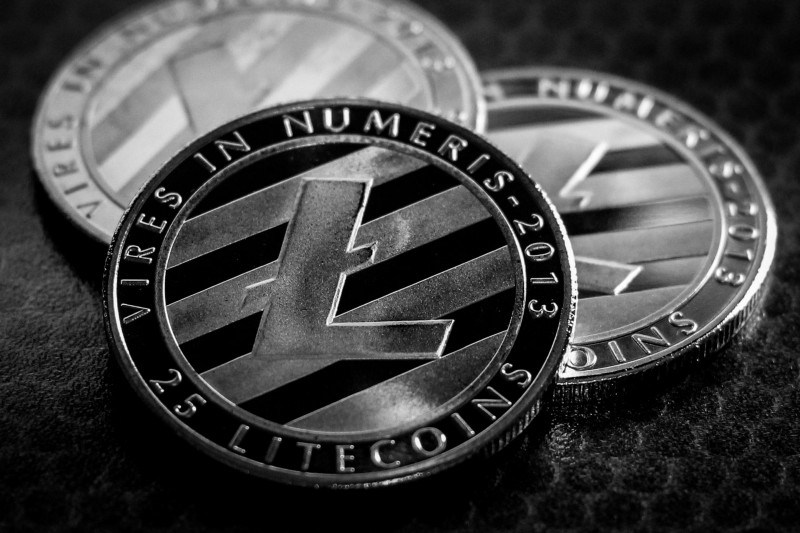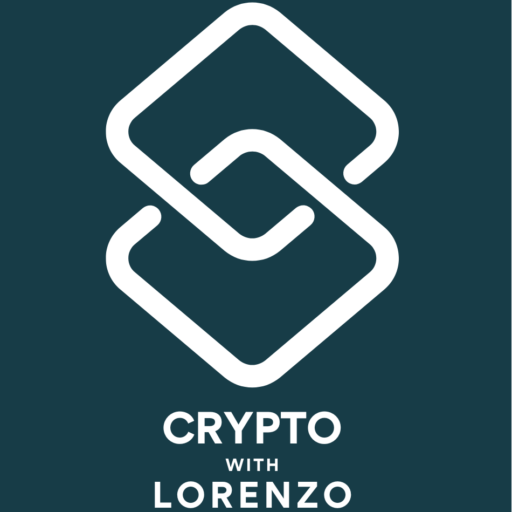Is Litecoin Still Worth It In 2022?
Whatever happened to “the silver to Bitcoin’s gold”?
Litecoin, once regarded as a Bitcoin test net, is, alongside the latter, one of the longest lasting crypto assets that is still in existence and being actively used, spending the vast majority of its time in top-10 list of cryptos (based on circulating market cap) since its inception back in 2011. However, despite its longevity to date, it has slipped down the market-cap ranking list, currently sitting just outside the top-20.

Litecoin x Mimblewimble
One of the key upgrades on the Litecoin blockchain is the integration of MimbleWimble (MW), a privacy-enabled feature that users can opt into. This is achieved through the use of ‘extension blocks’ on its network. It apparently provides a suitable balance between privacy and scalability on a given blockchain, as opposed to other choices available right now.
At present, the use of extension blocks only accounts for a negligible amount of LTC circulating supply on the above-mentioned network. However, this is anticipated to grow as the technology improves and more exchanges incorporate this feature.
As per the latter, a potential issue with such privacy-enabling features is that particular exchanges, particularly regulated ones that are ideal for beginners such as Coinbase, are obligated to comply with certain laws to ensure transaction records are maintained and customers are correctly identified to use their platform. This is especially the case with a growing push for well-established anti-money laundering (AML) laws pertaining to digital assets. Additionally, Binance, one of the world’s largest exchanges, has recently placed restrictions on LTC deposits and withdrawals involving MW extension blocks.
Hence, it is wise for Litecoin to maintain the MW privacy feature as an optional one, compared to the ring signatures and stealth addresses that are standard with Monero (XMR), one of the most renown privacy-focused cryptos. As a result, XMR has either been removed or not listed at all by some major exchanges, at least in particular jurisdictions.
A clear and concise summary of extensions blocks and how they can achieve privacy with some Litecoin transactions is available here.
General usage
Trading volumes and prices have been rather mediocre for LTC since the beginning of this year, with consistently flat LTC/USD 24-hour volumes; noticeably lower than those experienced between 2019 and the early part of 2020 (much of this during a bear market), as illustrated in the chart below.

On a positive note, despite the price drops as of late, down by about 85% from its new all-time high of $410 last year, new and active Litecoin addresses remain well above most of their historical levels, significantly exceeding those created and active around the 2017 crypto-sector bull run.
A promising sign for its adoption is PayPal’s decision last year to list LTC, alongside BTC, ETH, and BCH, to buy, sell and trade the asset amongst US and UK users, opening the opportunity for hundreds of millions of clients across both nations. Over time, I envisage PayPal to expand this service to Europe, parts of Asia and the rest of the world, extending its reach via the platform. This will all be reliant on the rules stipulated by various regulatory bodies across different jurisdictions, yet Litecoin and crypto in general will (most likely) gradually become more mainstream.
In relation to other E-commerce platforms/merchants that accept LTC, there are options to indirectly pay with it by purchasing Amazon gift cards with LTC and an assortment of other crypto assets, generally Bitcoin and major alts. Whilst not the same thing as direct integration, it is a start, and some clients would still be willing to take an extra step or two via a third-party.
An extensive list of (mostly online) stores that accept this crypto, let alone a broad range of digital assets is available here. A separate source has identified larger merchants that will take LTC, that can be viewed here.
Litecoin Block Reward Halving
Similar to the foundation crypto, LTC also experiences a block-reward halving roughly every four years (840,000 blocks to be exact for the latter), which also leads to a halving in its overall inflation rate during the same intervals. Moreover, LTC also has a capped supply of 84 million coins, quadruple that of BTC.
With the ongoing reduction in Litecoin’s inflation, it is forecast to reach a rate of 0 by 2142 or thereabouts. Assuming a steady to increasing demand for the coin (adoption), coupled with ongoing network improvements and major partnerships, this dwindling supply should help boost its coin’s price in future.
Charlie Lee selling his LTC back in 2017
This was a strong point of discussion shortly prior to the major market-wide sell-off that tanked cryptocurrency prices in late December 2017. LTC nearly did a 100x in 2017 alone, beginning the year at about $3.80, to reach an impressive ~$360.
With the entire crypto market going ballistic in November and December 2017 (that’s no exaggeration, as shown in the following chart), Litecoin creator Charlie Lee stirred up some controversy, notably with the timing of his decision. Several news outlets reported on this news, with the key reason being along the lines of him holding LTC as a “conflict of interest” when tweeting about his brainchild.

Whilst I acknowledge his perspective and see some merits to it by selling his holdings, there are two major flaws here:
— It appeared to shatter confidence amongst many people within its community, especially in the midst of an unprecedented bull run, not to mention the entire market started collapsing 36–48 hours after this story was publicised. It could have definitely been timed much better;
— Neither Satoshi Nakamoto nor Vitalik Buterin have sold all of their Bitcoin or Ethereum holdings, and have not dumped all of it whilst prices are high. In general, few, if any, creators or influential figures of a given crypto asset have sold off or refrained from holding their preferred digital asset because they are part of the project and were worried about a potential ‘conflict of interest’ when posting or reporting about said crypto.
The simpler way for Lee to have dealt with such a conflict would have been to disclose this LTC amount and (possibly) have even informed the community about his intention to offload his Litecoins; perhaps having followed a similar approach to that of Elon Musk with his Tesla shares would have been a more considerate way to move forward with the plan.
I know I have covered this point in extensive detail, and deliberately done so due, as, bar the market-wide bull run approximately 12 months ago, the crypto and project have failed to remain dominant amongst a rising tide of new entrants into the top-20 since 2018.
Fake partnership with Walmart; “buy BTC before LTC”
Back in September last year, GlobeNewswire announced the purported partnership between Litecoin and Walmart, apparently providing its clients globally the opportunity for its clients to pay with LTC.
As expected, the LTC price surged by roughly 30% at the time, but shortly after this announcement, the aforementioned news source provided a ‘Notice to Disregard’ the related news release. This was ultimately debunked as a hoax, even with an official communiqué from Walmart addressing this matter.
In response to this, Charlie Lee denied any involvement from the Litecoin Foundation (or anyone affiliated with it) in disseminating such a claim; he recognised the need for greater efforts to ensure such fake news is not released. This would be a wise idea, as the frequent phoney stories and fabricated partnerships would result in people losing faith in one of the earliest cryptos still active.
Furthermore, it would be wise for the founder, let alone any significant figures associated with Litecoin, to refrain from vague tweets appearing to support other cryptos before your own. I am specifically referring to this peculiar 2018 tweet (in the midst of a lengthy bear market for context). One of the things he mentioned here was:
“There will be at most 21 million Bitcoins in existence…so before you buy any other coin (LTC included), try to own at least 1 BTC first.”
Yes, I prefer Bitcoin over Litecoin, and would encourage people to hold a sufficient amount that they can afford to lose, prior to purchasing LTC. I see where Lee is coming from in relation to Bitcoin’s scarcity. Nonetheless, as the founder of another crypto, I would not be endorsing BTC over LTC, one that some in the community would perceive to be a Bitcoin rival (or at least at the time).

Litecoin and the road ahead
Some of you might interpret my assessment of Litecoin and LTC as being rather pessimistic and harsh, but I personally have nothing amongst the project, crypto or Charlie Lee. Rather, I see greater potential in other crypto assets, and would be fooling myself (at least at present), if I were to say that LTC offers a superior ROI than several other crypto assets out there. Mind you, things can change, and am basing my evaluation on what I have witnessed over the past 12–18 months compared to other digital assets.
I still see LTC maintaining a notable presence for the foreseeable future, with its reputation as a legacy coin. To its defence, Litecoin has outlasted a plethora of other cryptos that made it up the ranks in terms of circulating market caps, and are now simply remnants of the past. In the event of any prospective bull runs across the digital-asset spectrum, the coin will most likely benefit from such substantial price rises.
In a nutshell, returning to the original question of this article, I am about 50/50 on whether Litecoin has a promising future or not. I would be more inclined to say yes than no. I expect the MW integration to play some role in keeping it relevant, particularly for privacy-enabled micro transactions as a start, at least in a retail setting. Notwithstanding its lacklustre performance recently, it could just be a matter of patience to see whether development on the blockchain continues to pick up, more collaborations are made, a higher number of market pairs, greater adoption, and so on.
Do I still hold LTC? Yes. Will I sell it? Not planning to, anytime soon. Do I intend to purchase more? Possibly, though at most 1–2% of new purchases in the near future. If it were me, I usually say to people, it is good to have some skin in the game and buy a small amount that you are willing to lose. If you want to give Litecoin a go, particularly whilst the market is down considerably, then this could be a possibly opportunity to buy a few, or even just one.
I hope the crypto and overall project do well, and that improvements continue to be made, utility increases and that they find suitable ways to remain relevant (i.e., a digital asset that should remain within the top-50 for years to come, though I doubt how probable this will be if it remains stagnant). Mind you, competition is fierce in this space, so one cannot rest on their laurels, despite their former prominence.
Read every story from Crypto With Lorenzo (and thousands of other writers on Medium). Your membership fee directly…cryptowithlorenzo.medium.com
If you enjoyed this article, I recommend following my Medium page for regular articles pertaining to crypto assets, blockchain technology and more. Feel free to check out my publication as well, Crypto Insights AU. Thanks for your support.
None of this is financial advice and I am not a financial advisor. It is a mixture of news and opinions from either myself or the links provided. Please do your own research prior to investing in any crypto assets, let alone any product affiliated with this space.
